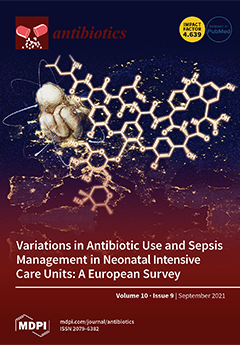The effect of a nutraceutical mixture, based on live yeast (LY), mannan oligosaccharides (MOS) and organic selenium (Se) on health status, as well as immune functionality and growth performance in the fattening of newly received beef cattle, was evaluated. A total of 1036
[...] Read more.
The effect of a nutraceutical mixture, based on live yeast (LY), mannan oligosaccharides (MOS) and organic selenium (Se) on health status, as well as immune functionality and growth performance in the fattening of newly received beef cattle, was evaluated. A total of 1036 Charolaise heifers were allocated into two experimental groups: (i) control group, without any nutraceutical support (
n = 487; initial weight = 325 ± 21 kg); and (ii) treatment group, supplementation during the first 30 days, with LY (5 g/head/day), organic Se (3 mg/head/day), and MOS (10 g/head/day) (
n = 549; initial weight = 323 ± 23 kg). The incidence of bovine respiratory disease (BRD) and other health issues was monitored, as well as the mortality rate. Blood samples were taken at d
0 and d
30 to evaluate the immune functionality and the inflammatory status. Growth performances, feces chemical composition, and carcass characteristics were recorded. The BRD occurrence tended to be reduced (
p = 0.06) in the Treatment group. The BHV-1 antibody production after vaccination was significantly improved (
p = 0.031), as well as the bactericidal activity (
p = 0.0012) in the Treatment group. No differences were found in the inflammatory status parameters. The final weight (
p = 0.006) and the average daily gain at d
30 (
p < 0.0001) were significantly improved by the treatment. No differences were found in terms of carcass characteristics, while the fecal content of NDF (
p < 0.0001), ADF (
p = 0.0003), and starch (
p < 0.0001) were significantly reduced by the treatment. The result of the present study suggests that the nutraceutical mixture used can support the animal’s immune systems, improving its ability to react against pathogens, as well as feed efficiency and growth performances during the whole fattening period.
Full article






